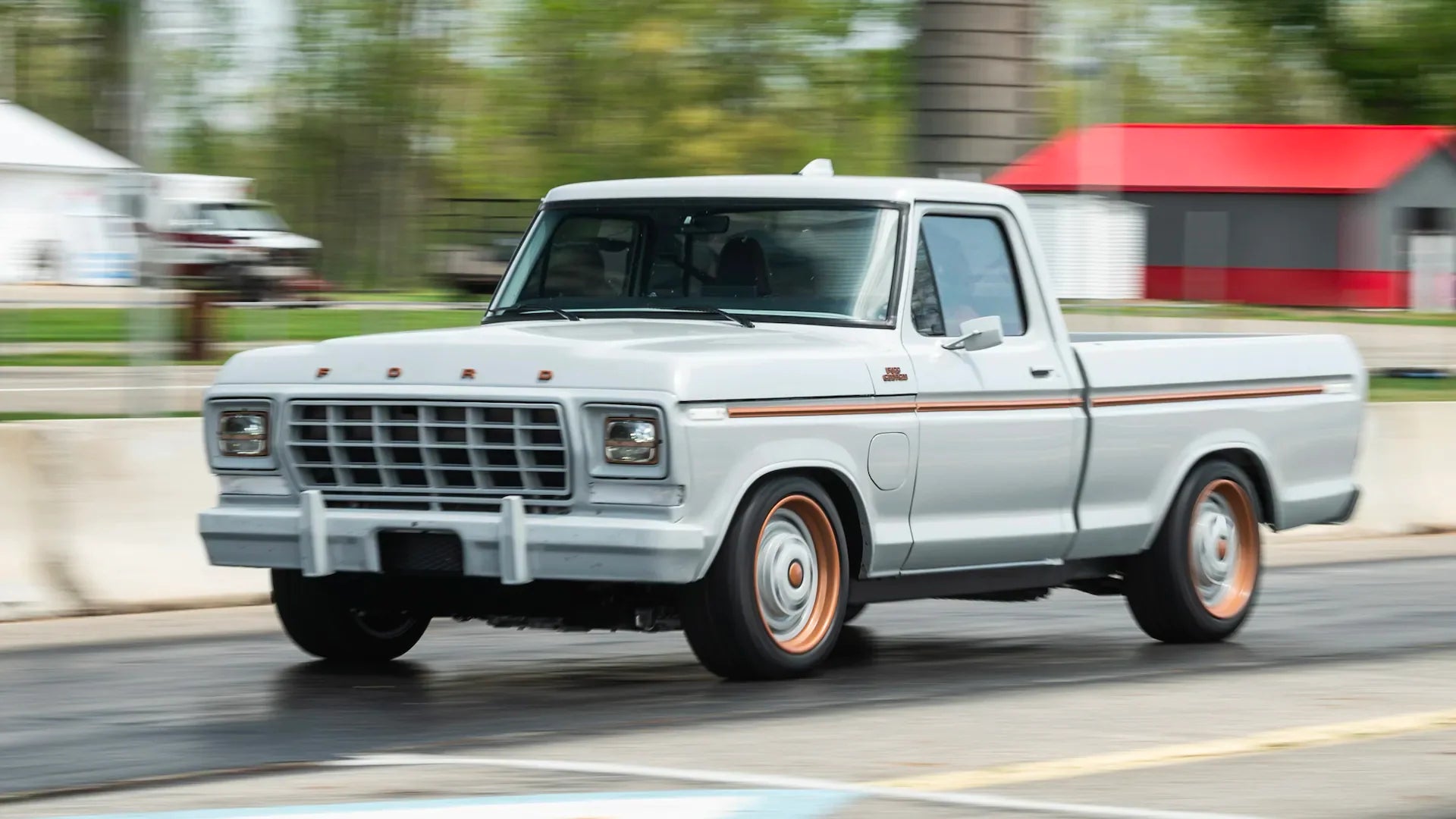The Evolution of Ford F-Series
The Ford F-Series has been a staple of American automotive history since its inception in 1948. Over the years, it has evolved significantly, with each generation bringing new advancements and improvements. This article takes a deep dive into two iconic models from different eras: the classic 1965 Ford F-100 and the modern 2021 Ford F-150. Let's explore how the F-Series has changed over 56 years and compare these two models head-to-head.
The Classic: Overview of the 1965 Ford F-100

The 1965 Ford F-100 is a symbol of a bygone era. With its simple, rugged design and reliable performance, it was a workhorse that helped build America. Its body was made of steel, and it was powered by a range of engines, from a 3.9L inline-six to a 5.8L V8. The F-100 was known for its durability and utility, making it a favorite among farmers, construction workers, and anyone who needed a dependable truck.
The Modern Beast: Overview of the 2021 Ford F-150
Fast forward to 2021, and the Ford F-150 is a completely different beast. It's not just a truck; it's a high-tech machine packed with advanced features. The 2021 F-150 offers a range of powertrains, including a hybrid option, and it's loaded with technology, from a digital instrument cluster to an infotainment system with Apple CarPlay and Android Auto. It's also more comfortable and luxurious than ever, with options like leather upholstery and heated seats. LED Factory Mart Offers Good Quality F150 Parts and Good Prices
Design Comparison: F-100 vs F-150

The Ford F-100 and F-150 are two iconic models in the Ford F-Series lineup, each with its unique design elements and specifications. The F-100, a classic model, was known for its cartridge-style sealed bearings and 28-spline axles, which were common features in cars of its era. The frame brackets and crossmembers in the F-100 were distinct and not braced. On the other hand, the F-150, a more modern model, introduced tapered bearings and had the option of 31-spline axles, providing a more robust and durable design. The F-150 also had a higher Gross Vehicle Weight (GVW) range, which did not fall into the government-defined class of "light truck," unlike the F-100. These differences in design and specifications reflect the evolution of Ford's truck lineup over the years, with each model offering unique features to meet the changing needs and preferences of consumers.
When it comes to design, the F-100 and F-150 are worlds apart. The F-100 has a classic, utilitarian look, with a simple grille, round headlights, and a flat, boxy body. It's a design that screams "function over form."
On the other hand, the F-150 is sleek and modern, with a bold, aggressive grille, angular headlights, and a sculpted body. It's a design that's as much about style as it is about function.
Performance Comparison: F-100 vs F-150
In terms of performance, the F-150 outshines the F-100 in almost every way. It's more powerful, more efficient, and more capable. The F-150's engines offer more horsepower and torque, and its towing and payload capacities are significantly higher. Plus, with its advanced suspension and drivetrain technologies, the F-150 delivers a smoother, more refined driving experience.
However, the F-100 has its own charm. Its performance is raw and unfiltered, giving you a direct connection to the road. It's a reminder of a time when driving was simpler and more mechanical.
|
Specification |
F100 |
F150 |
|
Length (inches) |
189.1 - 203.2 |
209.1 - 250.3 |
|
Weight (pounds) |
3,102 - 3,325 |
4,069 - 5,697 |
|
Engine options |
3.9L V6, 4.8L V8, 5.8L V8 |
3.3L V6, 2.7L EcoBoost V6, 5.0L V8, 3.0L Power Stroke V6, 3.5L EcoBoost V6, 3.5L PowerBoost Hybrid V6 |
|
Horsepower |
145 - 208 |
250 - 450 |
|
Torque (lb-ft) |
233 - 310 |
265 - 510 |
Technology: How the F-Series has Evolved Over the Years
The biggest difference between the F-100 and the F-150 is in technology. The F-100 was a simple machine, with few frills or extras. Its technology was limited to things like AM radios and manual window cranks.
The F-150, however, is a technological marvel. It's packed with features like a touchscreen infotainment system, a digital instrument cluster, and a suite of driver-assistance technologies. It also offers innovative features like Pro Power Onboard, which allows you to use your truck as a mobile generator.
The Verdict: Which is Better and Why?
Choosing between the F-100 and the F-150 isn't just about comparing specs and features. It's about deciding what you value in a truck. If you appreciate simplicity, ruggedness, and a direct, mechanical driving experience, then the F-100 is the truck for you. It's a classic piece of American automotive history, and driving one is a unique experience that modern trucks can't replicate.
However, if you want a truck that's powerful, capable, and packed with modern technology, then the F-150 is the clear choice. It's a testament to how far the F-Series has come, and it's a perfect example of what a modern truck can be.
Conclusion: The Legacy of the Ford F-Series
The Ford F-Series has come a long way since the F-100. Over the years, it has evolved from a simple work truck to a high-tech, high-performance machine. But despite all the changes, the F-Series has always stayed true to its roots. It's always been a truck that's tough, reliable, and capable.
The F-100 and the F-150 may be different in many ways, but they both embody the spirit of the F-Series. They're both trucks that are built to work hard and last long. And they're both trucks that have made their mark on American automotive history.
Whether you're a fan of the classic F-100 or the modern F-150, one thing is clear: the Ford F-Series is a testament to the power of evolution and innovation. It's a reminder of how far we've come, and a hint of where we're going. And no matter what the future holds, we can be sure that the F-Series will continue to lead the way.


